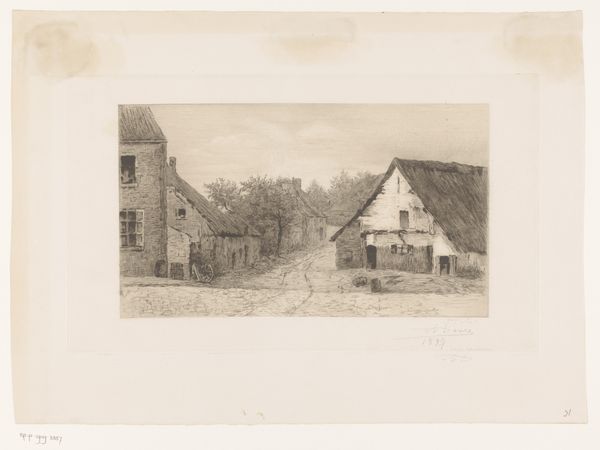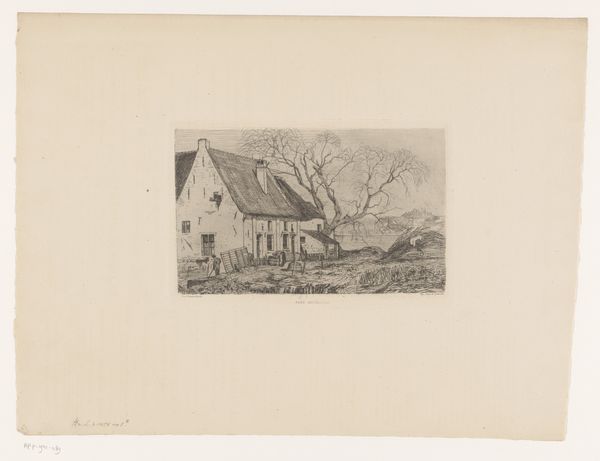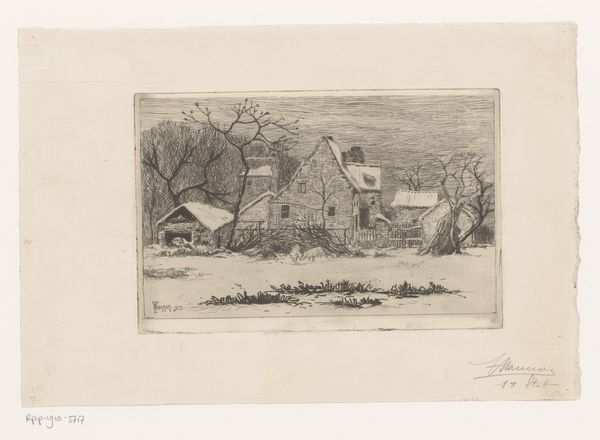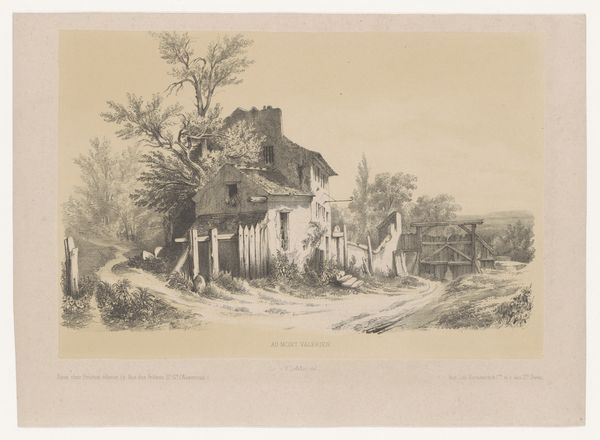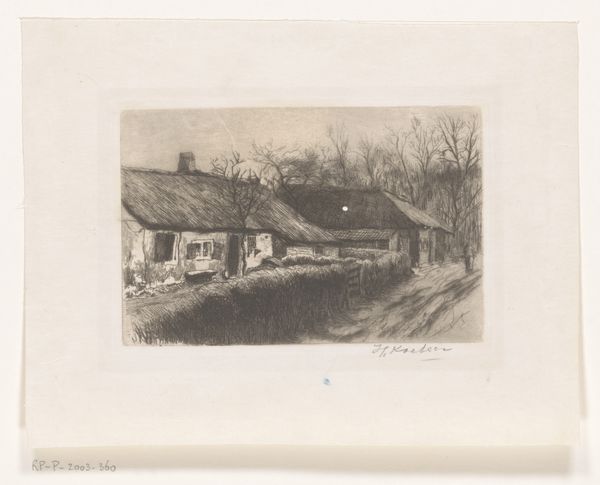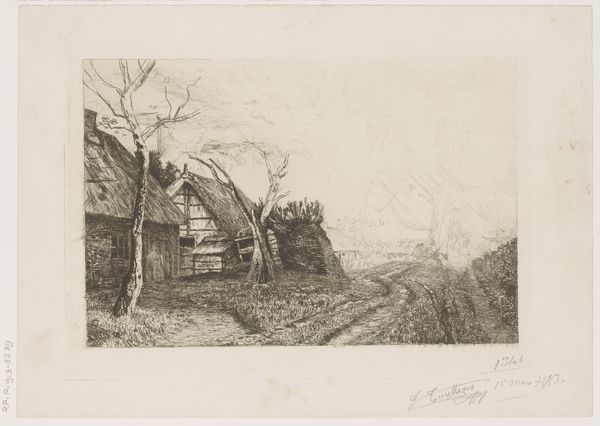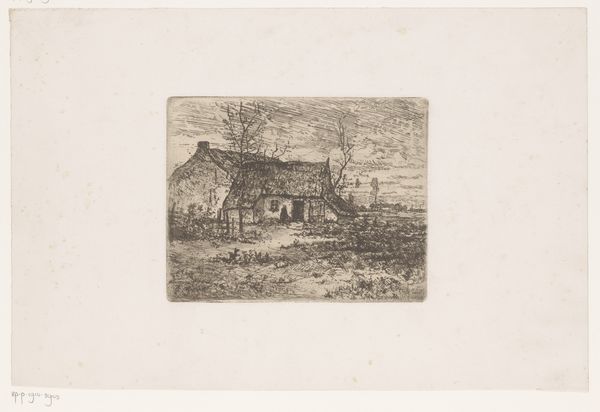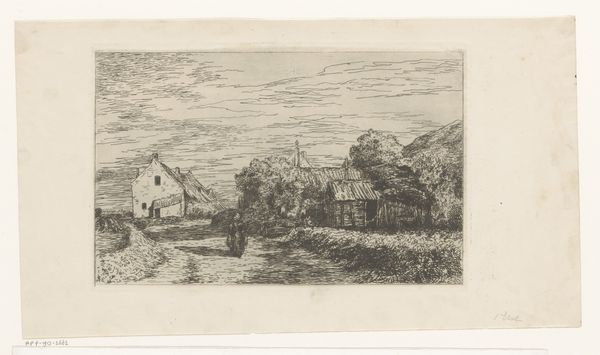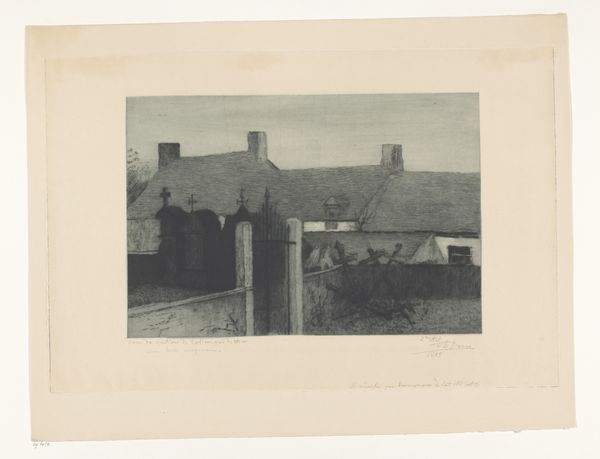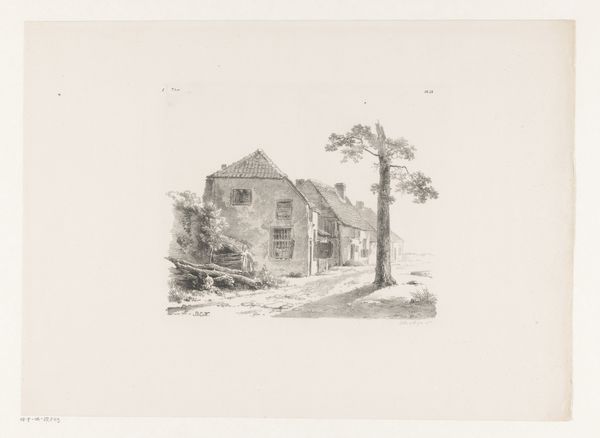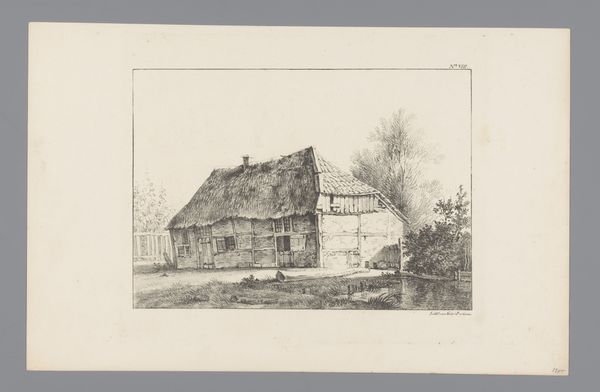
print, etching
# print
#
etching
#
landscape
#
genre-painting
#
realism
Dimensions: height 243 mm, width 416 mm
Copyright: Rijks Museum: Open Domain
Auguste Danse made this etching, Dorpsgezicht met rietgedekte gebouwen, using a metal plate, acid, and ink. While these are traditional art materials, the etching process has a close relationship to industrial printing. Notice how the etched lines create a sense of texture, from the thatched roofs to the rough stone walls. The technique involves applying a waxy, protective coating to a metal plate, scratching an image into the wax, and then immersing the plate in acid. The acid bites into the exposed metal, creating incised lines that hold ink. This is then printed onto paper. The result is a print that captures a humble village scene and, simultaneously, the industrialized process of its creation. The printmaking process allowed for the mass production of images, making art more accessible, and reflecting wider social and economic shifts in 19th-century Europe. It brings into focus how materials, making, and context enhance our understanding, blurring lines between fine art, craft, and industry.
Comments
No comments
Be the first to comment and join the conversation on the ultimate creative platform.
